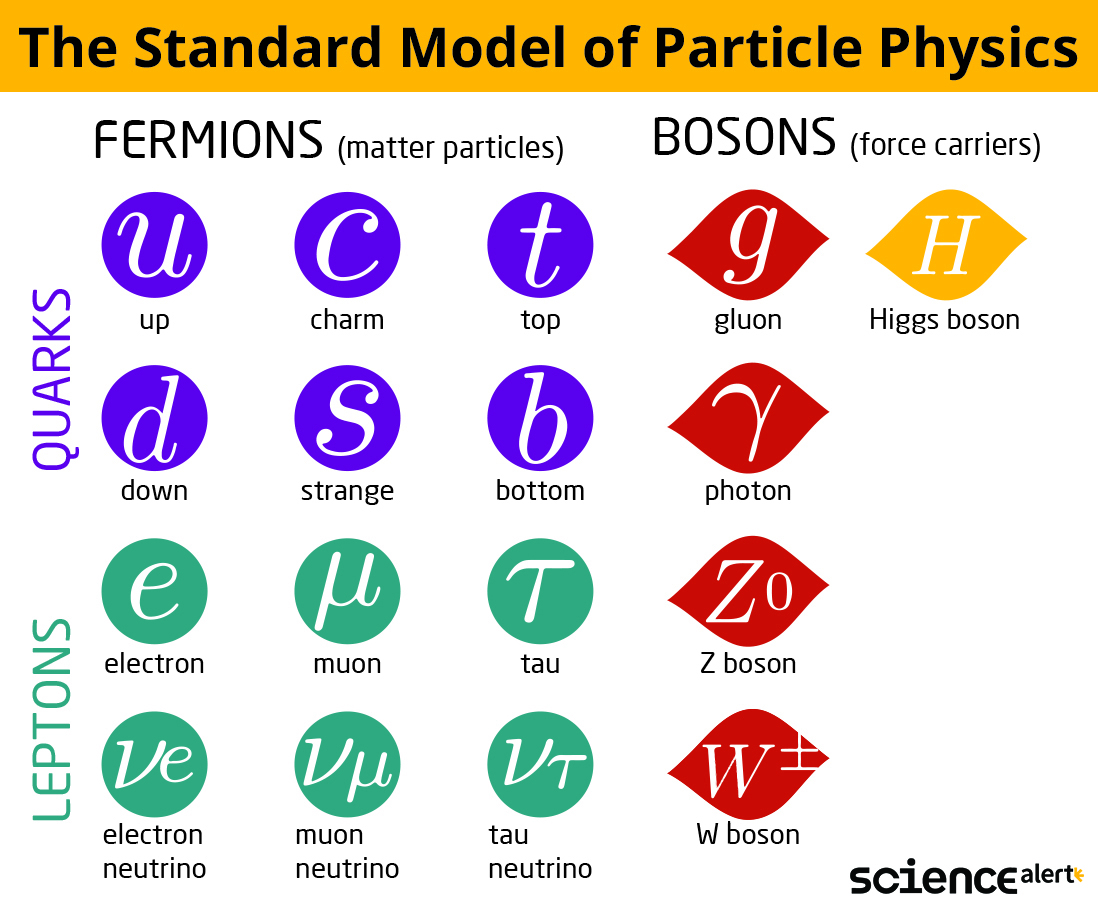The Standard Model is a set of mathematical formulae and measurements describing elementary particles and their interactions. It's similar to the way the Periodic Table of Elements describes atoms, categorizing them based on their characteristics, but instead the Standard Model categorizes the elementary particles - fermions and bosons.
Developed in stages starting in the early 1970s, the model combined what was known about particles and forces at the time to develop a fully consistent quantum theory on matter.
Not only did it do a good job of describing and mapping what was known, it presented gaps that predicted the existence of yet-to-be discovered particles, such as the Higgs boson.
The Standard Model is currently the most accurate theory covering the foundations of particle physics. But it's far from perfect, struggling to incorporate general relativity's description of gravity, tell us why the Universe is expanding ever faster, or explain why there is more matter than antimatter.
Particle families
The Standard Model categorizes fundamental particles into related groups, as seen in the table below.

Fermions
Think of these as the Lego blocks of matter, clicking together to make up the Universe. The basic rule of these things is 'don't sit where I'm sitting'. A feature of their quantum properties is that no two fermions can occupy the same place at once, allowing them to build everything from atoms to planets.
Fermions can be classed further into quarks and leptons. Fermion quarks combine into the more familiar protons and neutrons. A proton for example is composed of one down and two up quarks, that are glued together by what's called the strong nuclear force. But this force does not influence the second class of fermions, the leptons.
Leptons include electrons, which hover around the nucleus of atoms; electron-like particles such as taus and muons; and neutrinos - small, hardly-there particles that pass through the planet in ghost-like droves, barely pausing to say hello.
Bosons
These are the whispers that keep fermions in touch, mediating forces that bind and repel matter to explain why we can't walk through walls, why light comes in different colours, why small atoms can squeeze together into bigger ones, and why those bigger ones sometimes fall apart.
They include photons, the particles of light that communicate the electromagnetic force; gluons, which provide the strong nuclear force that bind quarks together to form protons and neutrons; W & Z bosons, which deal with the weak nuclear force; and the famous Higgs particle, which explains why some particles have mass under particular conditions.
All topic-based articles are determined by fact checkers to be correct and relevant at the time of publishing. Text and images may be altered, removed, or added to as an editorial decision to keep information current.
